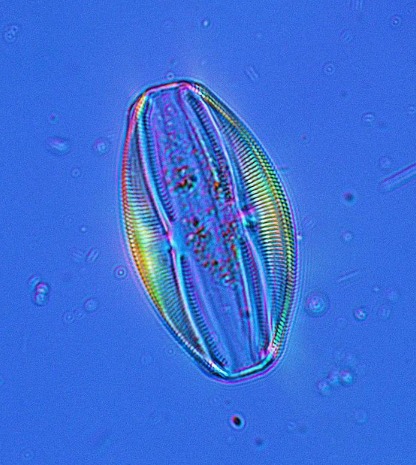Unsung Heroes in Carbon Capture and Climate Change Mitigation
A tiny but remarkable organism quietly played a vital role in shaping our planet's destiny.
About 150 to 200 million years ago, during the last ice age, earth experienced a tumultuous period of extreme cold, where massive glaciers advanced and retreated, reshaping the planet’s landscape.
Amidst this frozen chaos, a tiny but remarkable organism quietly played a vital role in shaping our planet’s destiny. Imagine this: a single drop of water contains more diatoms than the total number of stars visible in the night sky.
Yes, you read that right. These organisms, known as diatoms, have thrived since or even before the early Jurassic period, and their impact on our world is nothing short of extraordinary.
In this article, we will delve into the captivating world of diatoms and their remarkable ability to capture and store carbon, providing valuable insights into their potential as a natural solution in our modern fight against climate change.
Diatoms, scientifically classified as a type of algae, play a crucial role as primary producers in aquatic ecosystems, maintaining the delicate balance of our planet’s waters.
Through the process of photosynthesis, these microscopic powerhouses harness sunlight, carbon dioxide, and nutrients to fuel their growth. In their quest for sustenance, diatoms absorb atmospheric carbon, effectively removing it from the air we breathe.
What sets diatoms apart is their exceptional efficiency in carbon storage. These tiny organisms have evolved intricate silica cell walls that not only provide structural support but also serve as repositories for captured carbon.
Numerous scientific studies have explored the role of diatoms in carbon sequestration, shedding light on their significant contributions in Unlocking the value within biomass resources.
For instance, the study: “Wealth for waste: Diatoms as tools for phycoremediation of wastewater and obtaining value from Biomass” (2020) investigated the potential of diatoms as effective agents for phycoremediation of wastewater while also exploring the possibility of extracting value from the biomass.
Similarly, the study “Carbon sequestration potential in the Restoration of Highly Eutrophic Shallow Lakes” (2022) demonstrates the effectiveness of diatoms in the restoration of highly eutrophic shallow lakes.
Diatoms play a vital role in reducing nutrient levels and improving water quality. This research highlights the importance of diatoms as ecological indicators and valuable tools for the restoration and management of eutrophic aquatic ecosystems.
To further illustrate the significance of aquatic organisms in climate regulation, let’s consider the Azolla event, which occurred around 50 million years ago. During this period, the floating water fern Azolla experienced explosive growth, resulting in the sequestration of large amounts of atmospheric carbon and contributing to a cooler climate state.
This event underscores the shared potential of aquatic organisms, including diatoms, in climate regulation throughout Earth’s history.
Nature-based solutions, such as diatoms, have emerged as promising approaches to combat climate change. Diatoms not only sequester carbon but also enhance water quality, promote biodiversity, and contribute to the overall health of aquatic ecosystems.
 By raising awareness about the historical significance and relevance of diatoms, we can inspire a sense of awe and curiosity, igniting a newfound excitement for these unsung heroes of the natural world.
By raising awareness about the historical significance and relevance of diatoms, we can inspire a sense of awe and curiosity, igniting a newfound excitement for these unsung heroes of the natural world.
The remarkable potential of diatoms in climate change mitigation calls for collaborative efforts among scientists, policymakers, and environmentalists.
By working together, we can unlock significant carbon removal opportunities and pave the way for long-term climate solutions.
The urgency of the climate crisis necessitates collective action and a shared commitment to preserving our planet for future generations.
If you are interested in supporting or collaborating on initiatives related to diatoms and climate change, please reach out to us at rhizosolenia.collaborate@gmail.com. Together, we can make a difference and shape a sustainable future for all.
Thank you for joining us on this journey through the captivating world of diatoms and their vital role in our planet’s ecological balance.
Let us unite in our pursuit of a resilient and thriving world, where the power of nature guides. This article marks the second installment of our four-part series, continuing to explore the fascinating contributions of diatoms.


Comments are closed.